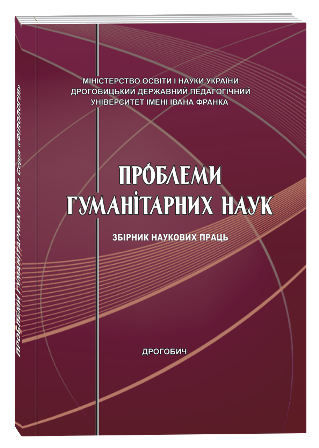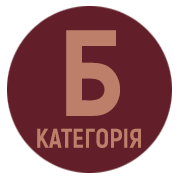GENDER NEUTRAL LANGUAGE IN MODERN SOCIETY AS A TRANSLATION STUDIES PROBLEM
DOI:
https://doi.org/10.24919/2522-4565.2021.46.6Keywords:
gender neutral language, parity, society, inclusive writing, French, Ukrainian, translation problemsAbstract
The permanent transformation of modern society is reflected, first of all, in its language. In particular, the attraction to gender parity leads to the need for comprehensive consideration of the self-identification of each individual in the communication process. The article considers the current state of social change in society, as a prerequisite for the development of gender translation studies, on the material of French and Ukrainian languages. The number of achievements in the field of gender linguistics, devoted to various aspects of the translation of other language pairs is a sign of the importance of this area. A comparative study proves that the culture of using gender-correct terms in Ukraine is quite low, compared to other countries, in particular, France. It should be noted that this is not only about the feminization of modern language, but also about its gender neutralization, given the non-binary personalities. The lack of means in the arsenal of language, adapted to the new gender picture of the world, undoubtedly leads to certain problems in intralingual communication and transmission in another language. The main difference in this case is in the opposite directions of development of French and Ukrainian languages: if the former tends to neutralize the names of professions, emphasizing inclusive writing, the second, on the contrary, to create gender-binary words. The French and Ukrainian languages have a different grammatical structure and, in particular, differ in means of expression of grammatical gender. The Ukrainian language belongs to those who have a system of conjugation, where grammatical gender is indicated in verbs, in contrast to French. Identical to the studied languages is the attempt to avoid gender-marked pronouns, replacing them with neutral (French) and other terms, without reference to biological sex (Ukrainian). At the moment, there are no comprehensive studies that study the features of translation transformations in the language pair: French / Ukrainian, with the transfer of units of gender-neutral language, which allows us to talk about the relevance of this work.
References
Бойко Ю., Сергєєва О. Ґендерний вектор лінгвістичних та перекладознавчих студій. Сучасні дослідження з іноземної філології. 2018. Вип. 16. С. 195–202.
Васильєва Е. В. Значення ґендерних маркерів при перекладі офіційно-ділових промов. Вісник Маріупольського державного гуманітарного університету. Філологія. 2010. № 3. С. 154–159.
Ґендерна політика. Міністерство соціальної політики України. 2021. URL: https://www.msp.gov.ua/timeline/Genderna-politika.html.
Глосарій і тезаурус Європейського інституту з ґендерної рівності / за ред. М. Бабак та ін. Київ : Вістка, 2021. 170 с.
Касаткіна-Кубишкіна О.В., Курята Ю.В. Ґендерно маркована лексика у англомовних рекламних текстах та особливості її перекладу. Наукові записки Національного університету «Острозька академія». Філологія. 2017. Вип. 64(1). С. 146–148.
Комов О.В. Ґендерний аспект перекладу. Актуальні проблеми слов’янської філології. Лінгвістика і літературознавство. 2011. Вип. XXIV. Ч. 1. С. 409–417.
Кушнірова Т.В., Капко М.М., Ступка І.М. Збереження ґендерної нейтральності тексту під час перекладу нормативно-правових актів. Вчені записки Таврійського національного університету імені В.І. Вернадського. Філологія. Соціальні науки. 2020. Т. 31(70). № 3. С. 18–23. DOI: https://doi.org/10.32838/2663-6069/2020.3-3/04.
Левченко О. Лінгвістичні дослідження ґендеру в Україні. Людина. Комп’ютер. Комунікація : збірник наукових праць. Львів : Львівська політехніка, 2017. С. 74–83.
Рубан Л.М. Ґендерні особливості перекладу художнього тексту в наукових працях. Філологічні трактати. 2013. Т. 5. № 4. С. 62–66.
Селиванова О.О. Сучасна лінгвістика : термінологічна енциклопедія. Полтава : Довкілля, 2006. 716 с.
Brouillette M.D., St-Jean C., Nunès K. Rédaction épicène et écriture inclusive. Canadian Journal for New Scholars in Education. 2021. Vol. 12, issue 1. P. 1–5. URL: https://journalhosting.ucalgary.ca/index.php/cjnse/article/view/72742.
Delisle J., Fiola M. La traduction raisonnée: manuel d’initiation à la traduction professionnelle de l’anglais vers le français. Ottawa: Les Presses de l’Université d’Ottawa, 2013. 720 p.
«Droits humains» ou «Droits de l’homme»? Les mots sont politiques! URL: https://www.cameleonassociation.org/2019/12/10/droits-humains-ou-droits-de-lhomme-les-mots-sont-politiques/.
Elmiger D. Binarité du genre grammatical – binarité des écritures ? Mots. Les langages du politique. 2017. № 113. URL: http://journals.openedition.org/mots/22624. DOI: https://doi.org/10.4000/mots.22624.
Elmiger D., Tunger V. Les consignes de rédaction non sexiste françaises et italiennes. Quelle attitude face à la généricité du masculin? Synergies Italie. 2014. № 10. P. 49–61.
Elmiger D. Les guides de féminisation allemands et français: la Suisse au carrefour d’influences différentes. Bulletin suisse de linguistique appliquée. (Bulletin VALS/ASLA). Neuchâtel, 2000. № 72. P. 211–225.
La féminisation des noms de métiers et de fonctions. Académie française. URL: https://www.academiefrancaise.fr/actualites/la-feminisation-des-noms-de-metiers-et-de-fonctions.
Oster C. La traduction est-elle une femme comme les autres ? – ou a quoi servent les études de genre en traduction ? La main de Thôt: Théories, enjeux et pratiques de la traduction. 2018. № 1. URL: http://revues.univ-tlse2.fr/lamaindethot/index.php?id=127.
Règles de féminisation. Le Bulletin officiel de l’éducation nationale, de la jeunesse et des sports. 2021. № 18. URL: https://www.education.gouv.fr/bo/21/Hebdo18/MENB2114203C.htm.
Schnitzer N. Le langage inclusif en français et en allemand : une tempête dans un verre d’eau? ILCEA. 2021. № 42. URL: https://journals.openedition.org/ilcea/11623#quotation. DOI: https://doi.org/10.4000/ilcea.11623.
Sofo G. Traduction du langage inclusif et échanges entre le français et l’italien. Savoirs en Prisme. 2019. № 10. P. 105–132. DOI: https://doi.org/10.34929/sep.vi10.62.



